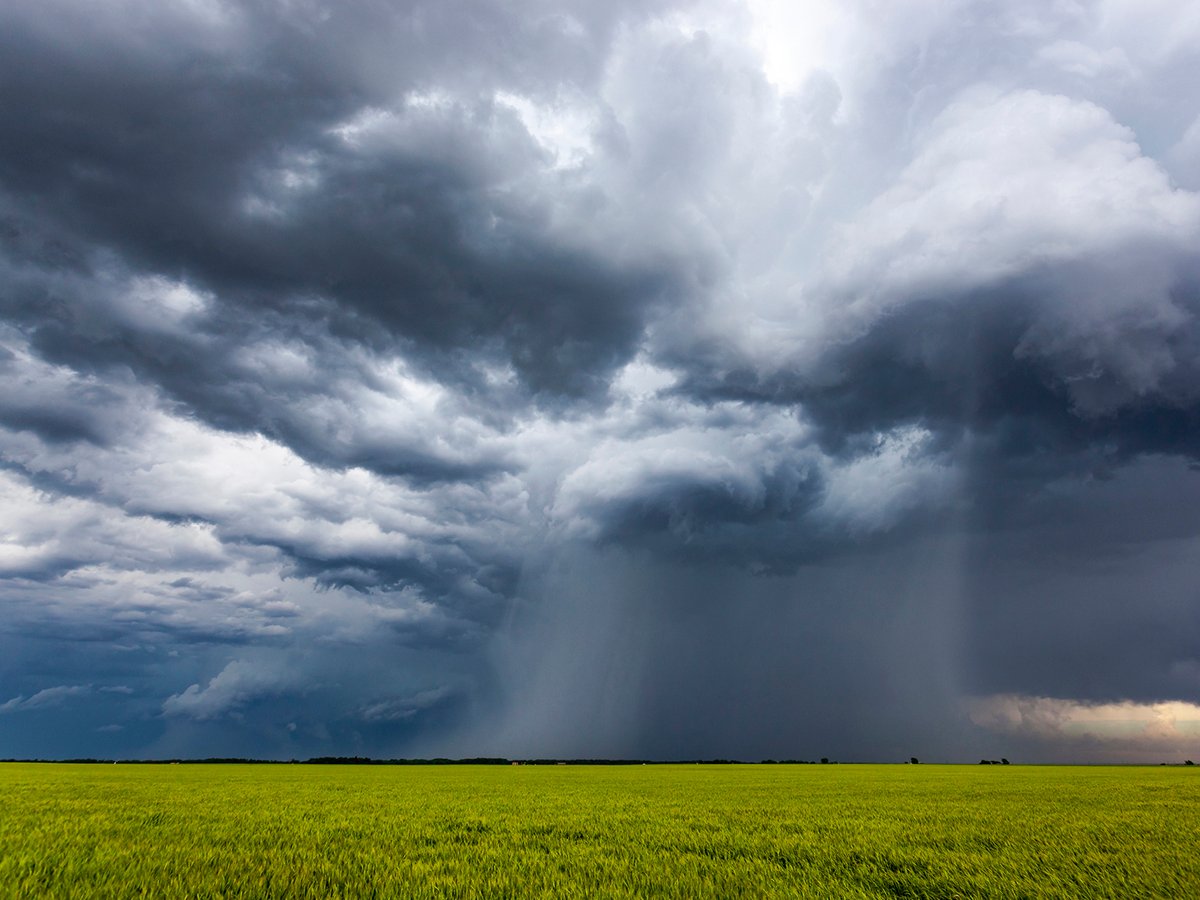High tech storage facilities cannot replace daily walks through the potato sheds, growers were told at the Saskatchewan Seed Potato Growers Association meeting in Saskatoon last week.
Robert Coffin, crop specialist at Cavendish Farms in Prince Edward Island, said farmers need to visit their storage piles daily to smell for ammonia and look for signs of dampness because automated storage systems cannot take care of all the problems.
“Look for the things the system cannot check,” said the agrologist and part-time potato farmer.
Coffin said many growers assume the work is done when the crop is in the bin.
Read Also

Extreme rain increases as planet warms
In this issue, we are going to wrap up our look at extreme rainfall by examining the different weather patterns that tend to be associated with these rainfall events.
“But there’s a lot of time and energy spent babysitting their storage,” he said. “If you take the responsibility too lightly, you can end up with a terrible mess and losses.”
He said potato production costs 10 times as much as growing grain, $150 to grow an acre of barley compared to $1,500 to grow one acre of potatoes.
In addition to maintaining quality during storage, Coffin also stressed the need for growers to understand the basic biology of potatoes as living organisms.
“Only by knowing that will you be successful in your potato storage,” he said.
Those bound for French fry plants need to be stored at 10 C while seed potatoes can be stored at about 3 C. Issues related to rotting are less likely at the lower temperatures, he said.
Citing Saskatchewan’s wet harvest conditions this year, Coffin advised growers to dry their potatoes to keep wet ones from leaking and affecting the others.
He said Saskatchewan offers an excellent environment for potato production, with a small acreage of the crop spread over a large area limiting any spread of viruses.
The freezing winter temperatures also help break any disease cycles.
While wet fields drowned some potatoes and delayed harvest operations for others, prices and yields remained good.
Outlook, Sask., seed potato grower Jan Kšnst said prices were higher than last year, due to a loss of potato production in Manitoba in the wet weather.
A loss of potato contracts to french fry makers also resulted in fewer acres seeded to potatoes this spring.
The fall rains at Outlook did not affect their harvest progress as much as others because they seed into light soils.
Kšnst said recent market changes had a greater impact on his operation this year.
The family plans to scale back its potato production bound for export markets due to a strengthened Canadian dollar and new demands in Mexico for testing seed samples there at the growers’ expense.
Kšnst anticipated switching some irrigated acres to growing feed and increasing the cow herd in future.
The potato business is dependent on eating trends, said Kšnst, who noted consumption in recent years has been affected by low-carbohydrate dieting plans.
Exporting seed potatoes is a huge investment of seed, sampling, time, storage and fertilizer on potatoes that might not pass muster in foreign lands, he said.
“The investment cost is so high and you can’t add it on to the selling price so it’s just another input cost.”














